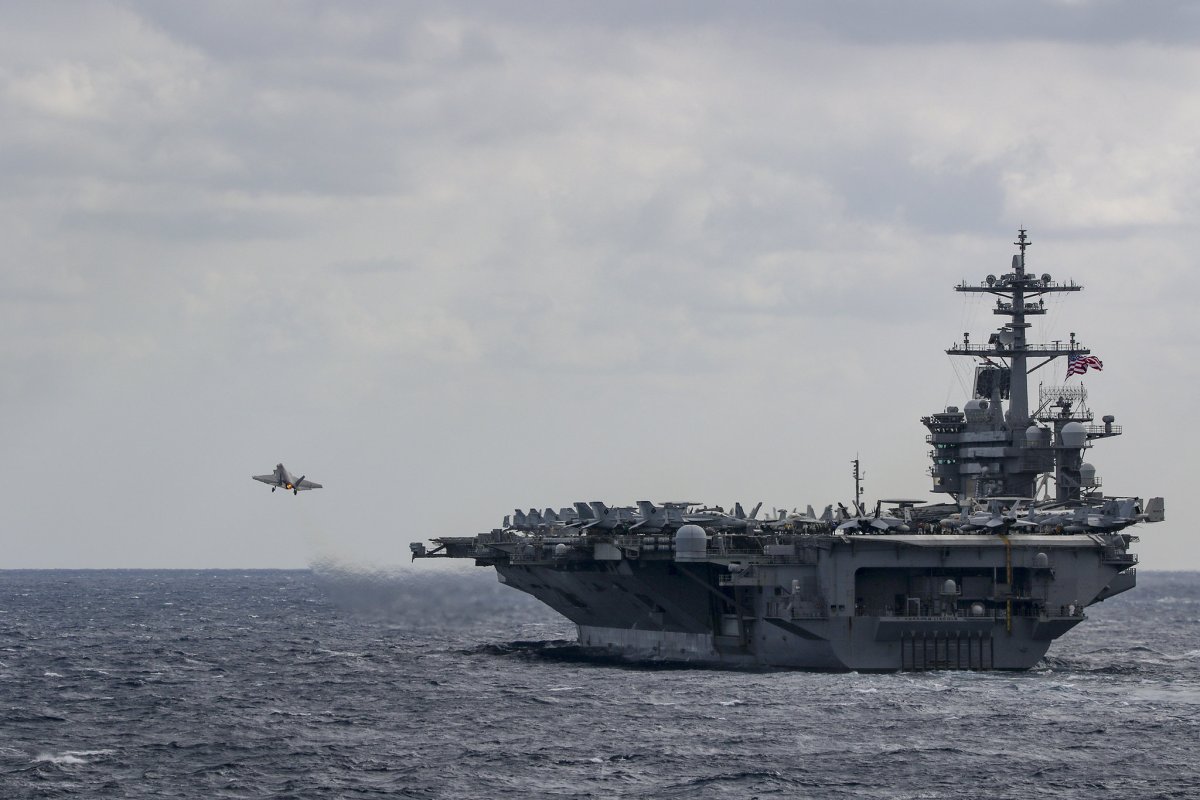A fighter pilot ejected safely from an aircraft on Monday after the jet crashed while returning to a carrier in the South China Sea, the U.S. Navy said.
Seven sailors on board the aircraft carrier USS Carl Vinson were injured during the "landing mishap," according to the Pearl Harbor-based U.S. Pacific Fleet. Three of them required medical evacuation to Manila, in the Philippines, while the remaining four were treated on the ship. All, including the pilot of the F-35C Lightning II, were in stable condition, it said.
The accident happened as the carrier was "conducting routine flight operations in the South China Sea," the statement said. The pilot of the F-35—attached to Carrier Air Wing Two as part of the Carl Vinson Carrier Strike Group—was recovered by helicopter. "Additional details and the cause of the inflight mishap is under investigation," the Navy said.
The F-35 is the U.S.'s fifth-generation multirole stealth fighter. The carrier-based F-35C operates using the "catapult-assisted take-off but arrested recovery"—or CATOBAR—system, which launches the aircraft with a catapult and recovers them using arresting wires.

Monday's incident happened on the second day of naval drills involving USS Carl Vinson and fellow Nimitz-class aircraft carrier USS Abraham Lincoln. The carriers, which carry around 20 F-35Cs between them, were escorted into the contested South China Sea on Sunday, following six days of exercises with Japanese forces in the Western Pacific, south of Okinawa. The arrival of the two carrier strike groups drew large fleets of Chinese warplanes, which were detected in the skies southwest of Taiwan.
The bulk of American naval forces are currently stationed in the Indo-Pacific, according to relevant public announcements. The ongoing dual carrier exercises near maritime zones claimed by China are yet another sign that the U.S. sees Asia as its priority theater of operations, despite pressing security obligations in Ukraine amid its standoff with Russia.
Announcing the start of dual carrier operations in the South China Sea, Carl Vinson-led Carrier Strike Group 1 Public Affairs said on Monday: "The ships and aircraft of the two carrier strike groups, with over 14,000 Sailors and Marines, will conduct coordinated surface and air operations in a complex maritime environment to demonstrate the U.S. Indo-Pacific Command Joint Force's ability to deliver a powerful maritime force."
"Training with Carrier Strike Group 1 in the South China Sea is a tremendously valuable opportunity. Operations like these allow us to improve our combat credible capability, reassure our allies and partners, and demonstrate our resolve as a Navy to ensure regional stability and counter malign influence," said Rear Adm. Jeffrey Anderson, who commands Abraham Lincoln-led Carrier Strike Group 3.

The two carrier groups will drill in items including anti-submarine warfare, air warfare, replenishments-at-sea, cross-deck flight operations and maritime interdiction operations, the statement said.
Although the exercises take place in international waters, Beijing views the frequent deployments as targeting its capabilities in particular. At a meeting involving Chinese and American military officials in December, China said it demanded an end to the U.S.'s "hostile naval and air force operations" in its surrounding sea and airspace.
In the weeks after the Seawolf-class nuclear-powered submarine USS Connecticut struck an "uncharted seamount" in October 2021—believed to be in the South China Sea—China capitalized on the incident to renew calls for U.S. forces to stay out of the region.
Uncommon Knowledge
Newsweek is committed to challenging conventional wisdom and finding connections in the search for common ground.
Newsweek is committed to challenging conventional wisdom and finding connections in the search for common ground.
About the writer
John Feng is Newsweek's contributing editor for Asia based in Taichung, Taiwan. His focus is on East Asian politics. He ... Read more
To read how Newsweek uses AI as a newsroom tool, Click here.








